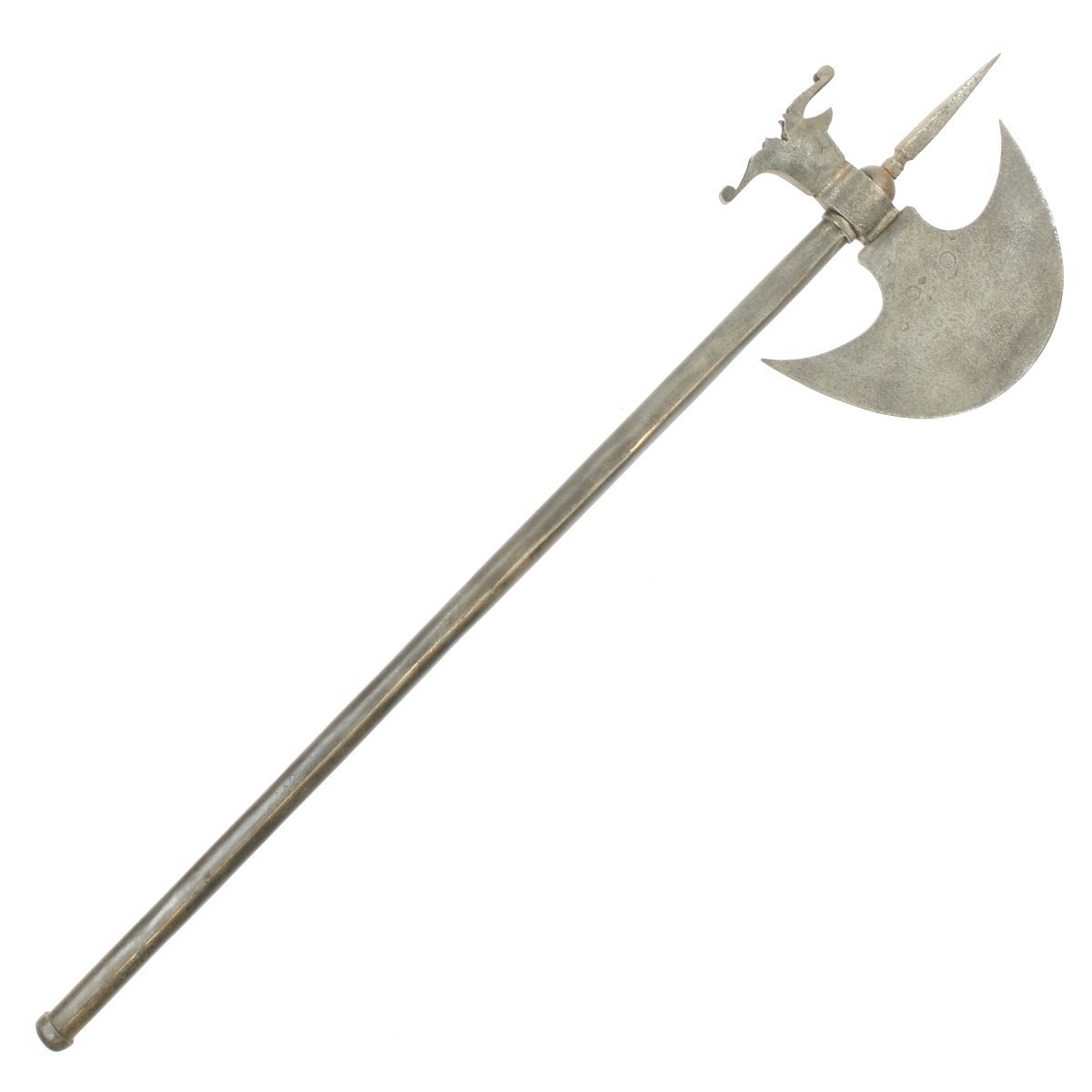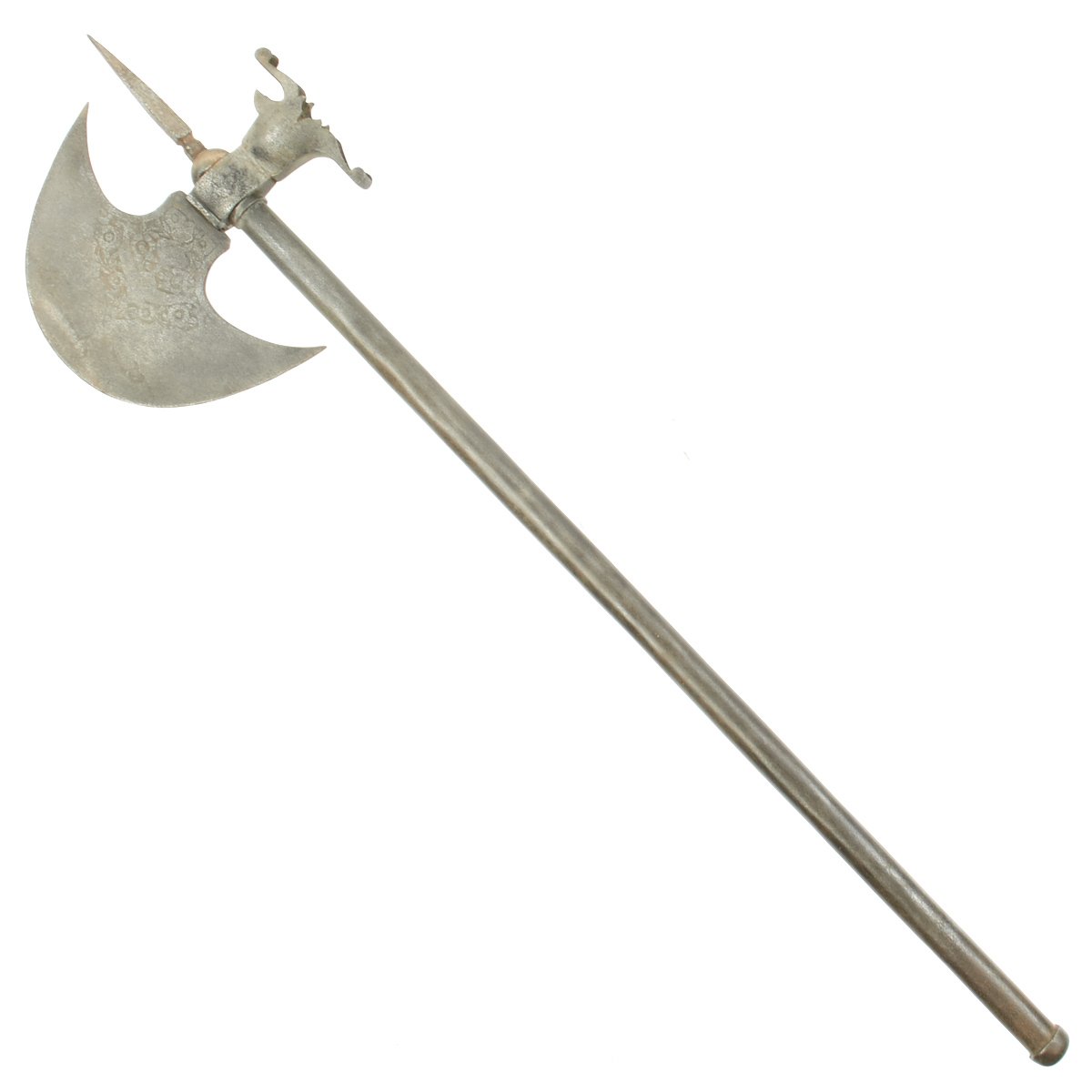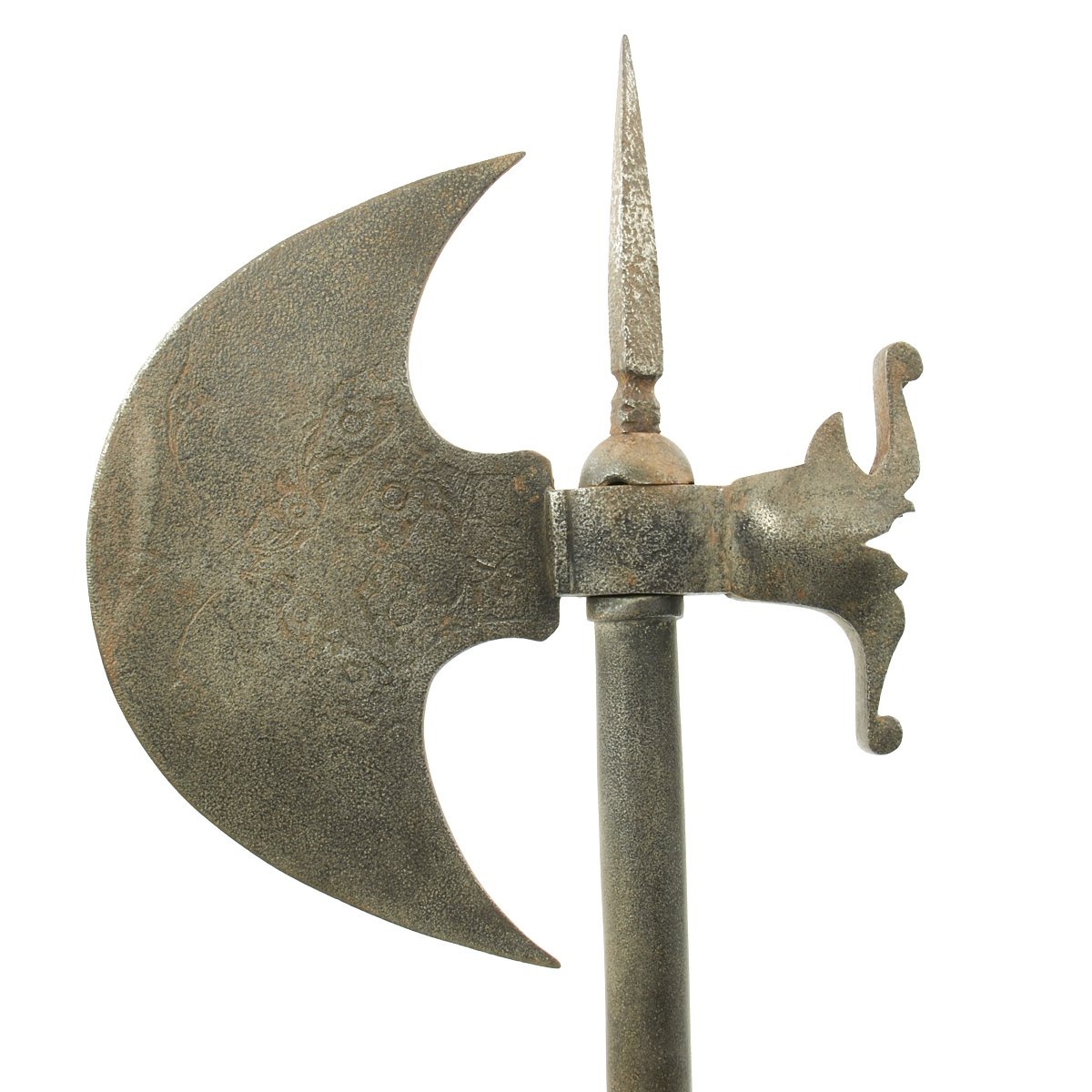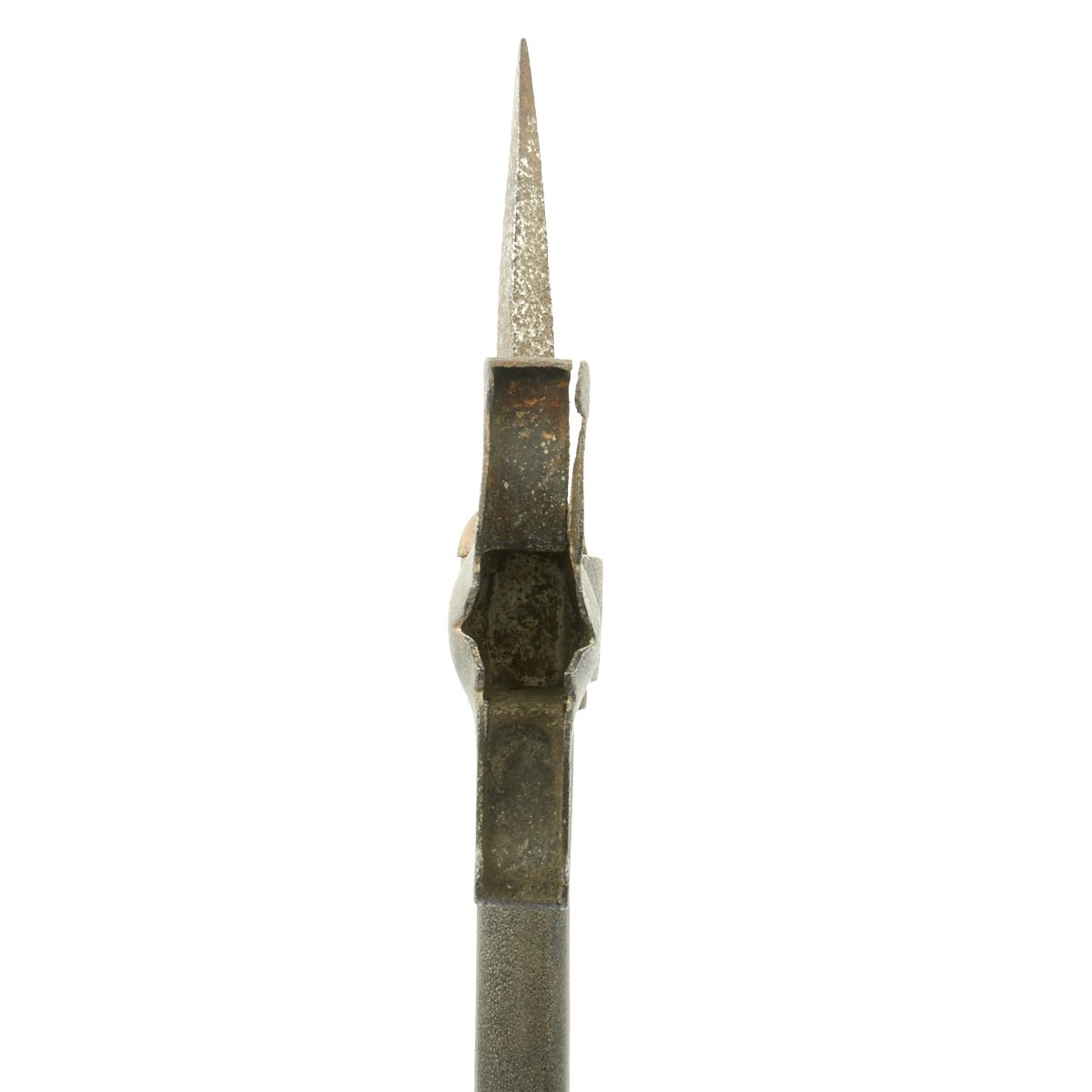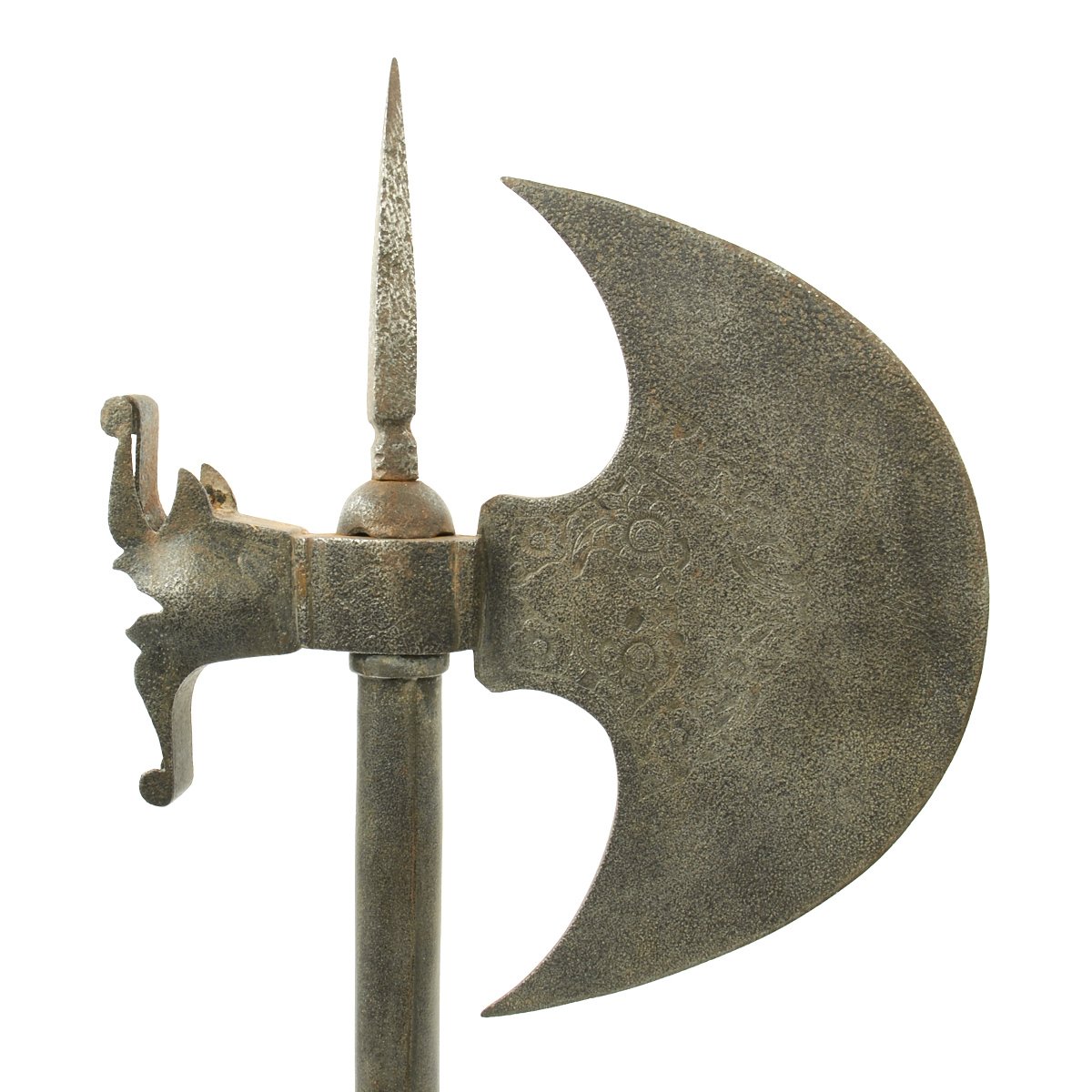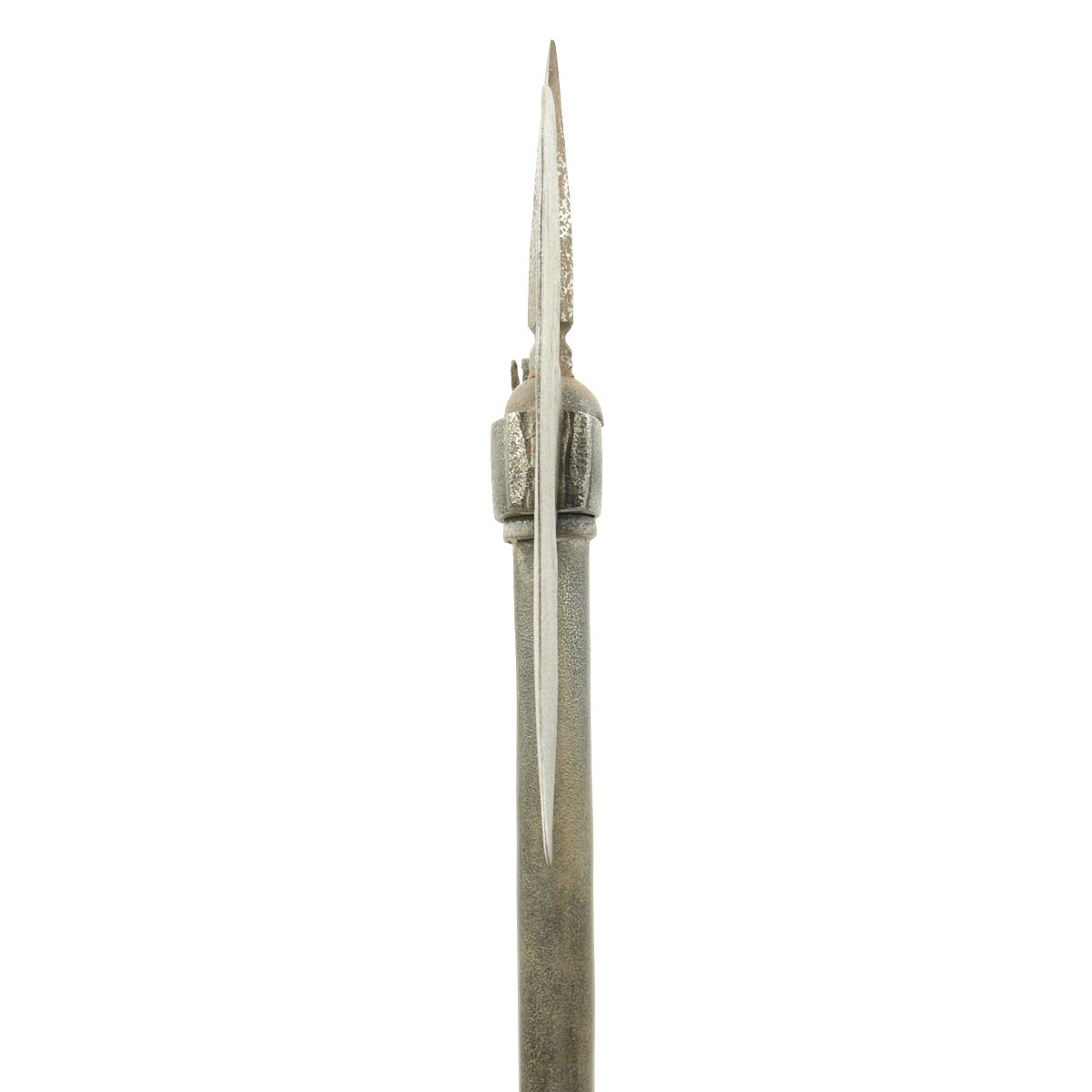Original 19th Century Indo-Persian All Steel Tabar Battle Axe Original Items
$ 250,00 $ 100,00
Original Item: Only One Available. The tabar (also called tabarzin, which means “saddle axe”) is a type of battle axe. The term tabar is used for axes originating from the Ottoman Empire, Persia, Armenia, India and surrounding countries and cultures. As a loanword taken through Iranian Scythian, the word tabar is also used in most Slavic languages as the word for axe.
The tabarzin (saddle axe) (Persian: تبرزین; sometimes translated “saddle-hatchet”) is the traditional battle axe of Persia (Iran). It bears one or two crescent-shaped blades. The long form of the tabar was about seven feet long, while a shorter version was about three feet long. What makes the Persian axe unique is the very thin handle, which is very light and always metallic. The tabarzin was sometimes carried as a symbolic weapon by wandering dervishes (Muslim ascetic worshippers). The word tabar for axe was directly borrowed into Armenian as tapar (Armenian: տապար) from Middle Persian tabar, as well as into Proto-Slavonic as “topor” (*toporъ), the latter word known to be taken through Scythian, and is still the common Slavic word for axe.
This example came out of the back door of a museum in Europe many years ago. It dates to the 1800’s and could have originated anywhere from Western Persia to Eastern India. It looks like what we all imagined King Arthur’s Knights to have carried. It measures 31 1/2″ in overall length with a 8″ blade. The virtually semi-circular blade is covered in decorative engravings of flowers etc., It has a Spike on the top and an all iron/steel hollow shaft, typical of this type of axe.
On the back side of the blade there is a mounting for something else which is now missing and by looking at this we have no idea what this may have been. The metal surface is covered with old pitting scars however this presents very well and has a very romantic feel to it. The head is also somewhat loose on the shaft.
Ready to display!
Fast Shipping with Professional Packaging
Thanks to our longstanding association with UPS FedEx DHL, and other major international carriers, we are able to provide a range of shipping options. Our warehouse staff is expertly trained and will wrap your products according to our exact and precise specifications. Prior to shipping, your goods will be thoroughly examined and securely secured. We ship to thousands clients each day across multiple countries. This shows how we're dedicated to be the largest retailer on the internet. Warehouses and distribution centres can be located throughout Europe as well as the USA.
Note: Orders with more than one item will be assigned a processing date depending on the item.
Before shipping before shipping, we'll conduct a thorough inspection of the items you have ordered. Today, the majority of orders will be delivered within 48 hours. The delivery time will be between 3-7 days.
Returns
The stock is dynamic and we cannot completely manage it because multiple stakeholders are involved, including our factory and warehouse. So the actual stock may alter at any time. It's possible that you may not receive your order once the order has been made.
Our policy is valid for a period of 30 days. If you don't receive the product within 30 days, we are not able to issue a refund or an exchange.
You can only return an item if it is unused and in the same state as the day you received it. You must have the item in its original packaging.
Related products
Uncategorized
Uncategorized
Uncategorized
Uncategorized
Armoured Fighting Vehicles of the World: AFVs of World War One (Hardcover Book) New Made Items
Uncategorized
Uncategorized
Armored Burgonet Helmet & Polearm from Scottish Castle Leith Hall Circa 1700 Original Items
Uncategorized
Uncategorized
Uncategorized
Uncategorized
Uncategorized
Uncategorized
Uncategorized
Uncategorized
Uncategorized
Uncategorized
Band of Brothers ORIGINAL GERMAN WWII Le. F.H. 18 10.5cm ARTILLERY PIECE Original Items
Uncategorized
Uncategorized
